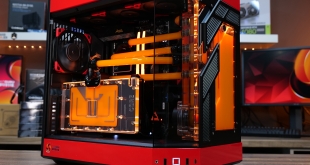Software Overview
The Samsung Galaxy xCover comes running on Android 2.3.6 with Samsung’s TouchWiz UX layered over the top. For those not in the know Google offers a stock Android experience that can be modified through custom skins and launchers, in the xCover this is the function of TouchWiz. HTC’s skin is called Sense, while Motorola’s skin is widely accepted as MotoBlur.
Also I am told the xCover will never get an update to the latest version of Android 4.0 Ice Cream Sandwich “as the hardware will not support ICS”. Needless to say the single core Marvell chipset and its associated GC800 GPU, unseen on any other phone, will require more resources than Samsung wishes to commit to get Android 4.0 running on an mid-range, niche market smartphone. So if you do decide to buy the xCover don’t go in expecting any major updates.

Samsung’s TouchWiz UX software skin offers up some interesting differences to HTC’s Sense and the stock experience found on Android 2.3 Gingerbread. To me at least a lot of things appear to be a whole lot less functional and presents the end user a more iOS-like experience.
Lockscreen
Starting with the lockscreen it is about as basic as you can get, showing just a digital clock and today’s date. Not even music controls or weather information can be displayed. Although you do get a little tab to swipe from right to left if you have a new text message.
Slide to unlock is here by default and was pretty horrible to use. You have to swipe the whole image off the display rather than just flick a little circle around. Due to Samsung’s back end it required a pretty decent slide of one’s fingers rather than a quick flick, something that frustrated me on numerous occasions.
One thing TouchWiz UX steals from the tablet optimised Android 3.X Honeycomb is the ability to enter your pattern code, PIN or password straight from the lockscreen with no need for a preliminary slide-to-unlock.
Homescreens
Once you’ve discovered how annoying unlocking the phone is say hello to your Android homescreen. Like I noticed, you will likely experience a sluggishness in the interface for a few seconds after the phone has been asleep for a while as the CPU recovers from a deep sleep.
Whether you’re on the homescreens or in the application drawer you will have a set of buttons at the bottom of your screen; shortcuts to the phone, contacts, messaging and application drawer/homescreens. These can not be changed at all, for example changing out the messaging shortcut for Gmail if you never text people is not something you are able to do.
It would definitely be wise to check out the Google Play store for some decent widgets as the ones included don’t add much to the Android experience. The included widgets are few in number, meaning you are limited to some basic clock modules, including the TouchWiz skin one shown in the screenshot up a bit, a task manager and an AccuWeather.com widget.
All the clock widgets do absolutely nothing. Want quick access to your alarms or calendars? Honestly, just don’t even bother with the included clock widgets. Although they do cause the phone to vibrate so there’s a missing link here. Bug counter: One.
Annoyingly the ability to quickly switch from silent, vibrate and call modes is not present. I love the ability to easily switch between them using the volume rocker. Holding down the volume down button will result in vibrate mode being activated but silent mode is not enabled with an extra click. To switch between them you must go into sound settings. This could just be me but it is sort of a big deal.
As with any Android phone going back as far as time itself can remember dragging down on the status bar will reveal the notification overlay. This is where all your notifications like new emails and missed calls will be found. It also allows you to quickly change popular settings such as Wi-Fi and GPS and also clear all your current notifications.
You can also access a basic multitasking overlay by holding down the home button.
Application Drawer
Tapping the permanently placed application drawer button in the bottom right of the homescreen will take you straight to the application drawer. Imagine Apple’s iOS before folders were included and you have the xCover’s application drawer summed up pretty well.
The 4×4 grid of applications can be organised in anyway you please, you’ll just have to do it manually and be left with carpal tunnel by the time you’re done. If you didn’t pick it up; there is absolutely no option to quickly sort applications by date downloaded, alphabetical etc.
This is a complete pain for me, once you have a complete and rather standard set of 50 applications on there it is near impossible to quickly find an application without any thoughtful organisation or search aids.
Although if you have a keen eye for icons on a low resolution screen you can pinch-zoom outwards and be presented with an overview of all application pages. Tap the page of your choice and you’ll be taken to the standard view of it.
 KitGuru KitGuru.net – Tech News | Hardware News | Hardware Reviews | IOS | Mobile | Gaming | Graphics Cards
KitGuru KitGuru.net – Tech News | Hardware News | Hardware Reviews | IOS | Mobile | Gaming | Graphics Cards










